Chapter 13. Stockholm and Beyond [August 30, 1347]
Cultural Explanations
 |
Chapter 13. Stockholm and Beyond [August 30, 1347] Cultural Explanations |
|
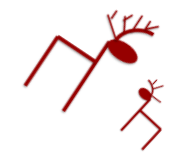 |
In this chapter Nieiddash finds a mate. |
| Nieiddash and the bull reindeer |
In this chapter, Bávlos begins his trek across the countryside of the western half of the Swedish realm. In the process, his reindeer enters into the rut season and eventually runs off to mate with a mysterious bull reindeer who appears out of nowhere. An aristocratic hunt nearly spells the end for Nieiddash, but she manages to escape the hounds by hiding in the skirts of a passing lady.
The Deer and Elk Farmers' Information Network provides a good overview of reindeer rut: click HERE to read. In the far north of Scandinavia, reindeer come into rut in early September. Further south, the rut season will start earlier, particularly if the reindeer have received good nutrition and are contented. Bávlos does not expect to find any reindeer in the region where he is roaming, but the medieval period, reindeer herds extended much farther south than they do today. So it is not entirely out of the question that Nieiddash could meet a bull in the countryside of Östergötland.
During rut, the bull reindeer (Rangifer tarandus) undergoes a marked transformation. He will grow narrow at the waist and thick at the neck, and develop a shaggy main. His testes become enlarged and the surge of testosterone causes him to act very aggressively. He will seek out herds of female reindeer and fight to keep other males from having access to them. Bulls can do each other great harm in this condition, and will even battle each other to the death. The bulls also pose a danger to humans as well, and Sámi herders knew to give bulls plenty of room and little interference during the rut season.
Females like Nieiddash become skiddish and interested during this season. They have one to three brief periods of heat (oestrus) over the course of two to three weeks. These receptive periods last from 12 to 24 hours. If the cow manages to breed in this period, she will conceive, giving birth 210 to 220 days later. In northern Scandinavia, cows tend to calve around May 1, but reindeer further south will give birth somewhat earlier.
Reindeer are not praticularly romantic animals: as soon as breeding has occurred, males and females cease to take any interest in each other. Cows tend to separate from bulls and nonreproductive animals and form herds of their own for the winter and early spring. This behavior helps ensure that the calves will not be trampled by males when first born, and reduces the competition that females face for food. After rut, both males and females lose their antlers, although pregnant cows will retain their antlers until calving. Biologists theorize that the antlers help the cows ward off larger males in the competition for limited food during the winter months.
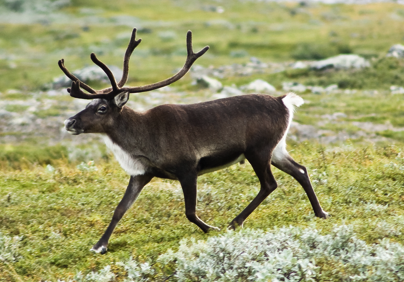 |
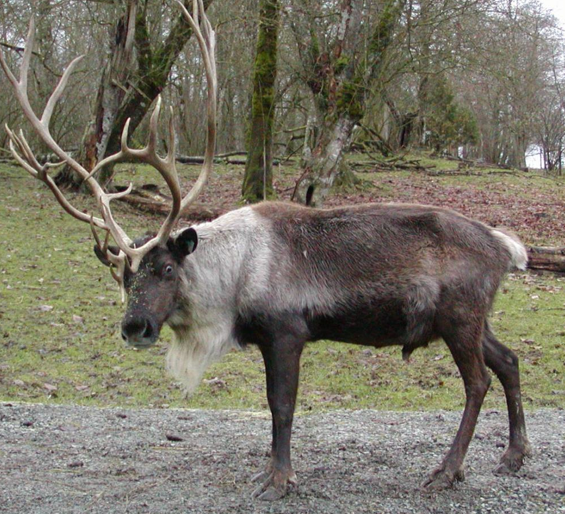 |
| Reindeer cow | Reindeer bull in rut |
You can read about reindeer and the challenges of herding and caring for them in the modern world at the excellent international website Reindeer Blog.
Just Nieiddash completes her breeding, she falls prey to one of the most prestigious pastimes of medieval courtly life: the deer hunt. Noblemen would release their pack of hounds and follow the dogs on horseback as they located and then pursued a deer. This custom was not practiced to gain meat but rather to pass the time, and hounds were bred to be loud but not particularly fast. Consider the description that Shakespeare's Duke Theseus gives his bride in A Midsummer Night's Dream:
My hounds are bred out of the Spartan kind:
so flewed, so sanded, and their heads are hung
with ears that sweep away the morning dew;
crook-kneed, and dewlapped like Thessalian bulls;
slow in pursuit, but matched in mouth like bells,
each under each. A cry more tuneable
was never holloed to nor cheered with horn
in Crete, in Sparta, nor in Thessaly. (Midsummer Night's DreamIV: 1: 118-125)
In southern Sweden, as elsewhere in mainland Europe, two deer species were normally hunted. The larger was the European red deer (Cervus elaphus) a magnificent animal in which only the male bears antlers.
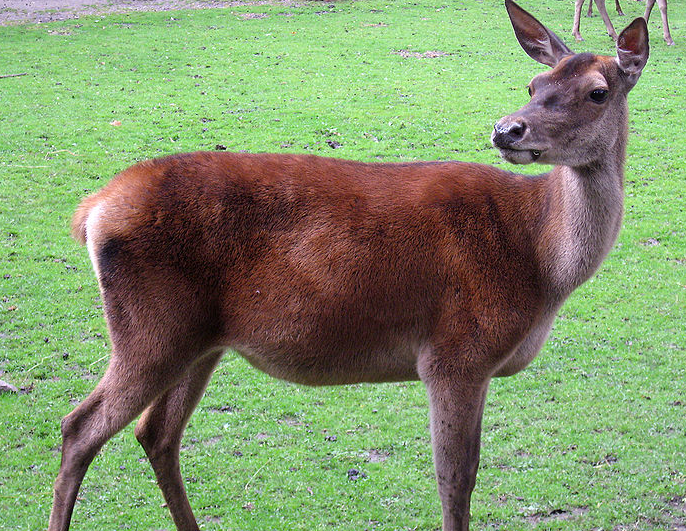 |
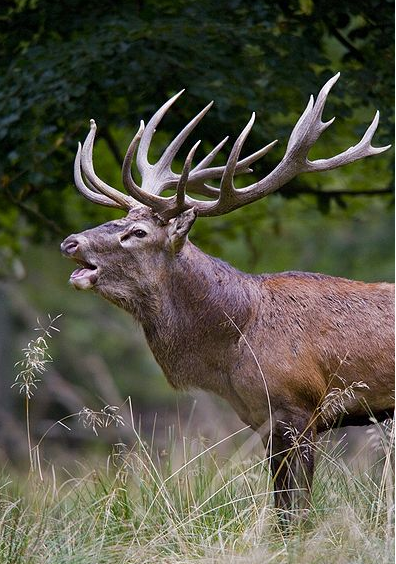 |
| Female red deer | Male red deer |
A second, somewhat smaller species, was also favored by nobles: the fallow deer (Dama dama).
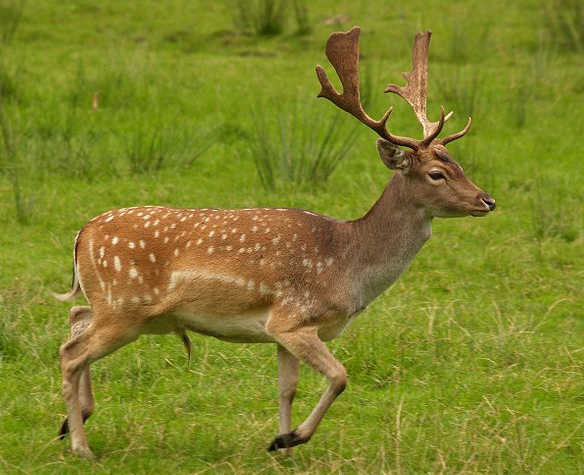 |
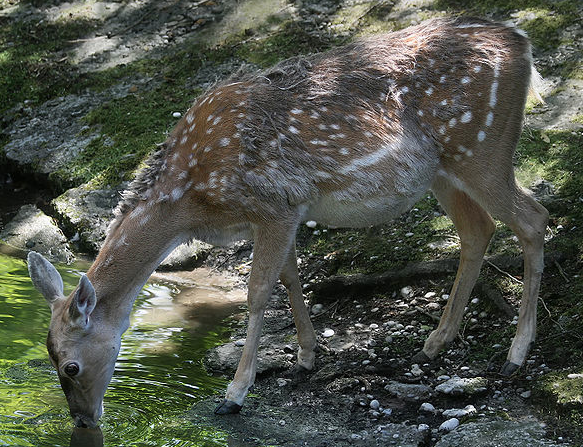 |
| Male fallow deer | Female fallow deer |
The deer hunt that is depicted in this chapter is recounted in the Vita of St. Catharina (1332—81). St. Catharina, daughter of St. Birgitta, married the Saxon nobleman Eggert von Kyrnen. One day, Eggert was out hunting with his hounds and friends when his pack began to pursue a deer. The deer ran for a long distance trying to elude the hounds. At length, it rush up to where St. Catharina was riding in a carriage, leapt aboard and hid behind Catharina's skirts. The young noblewoman pleaded on the deer's behalf and convinced her husband to let it live. In Catharina's vita, the deer is said to have been wild, and this event is counted as a miracle. In the novel, of course, Nieiddash is a tame reindeer, mistaken by the hunters for a wild stag and hunted until she takes refuge beside the lovely Catharina.